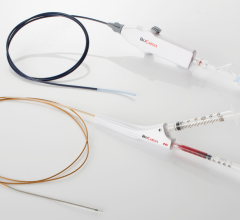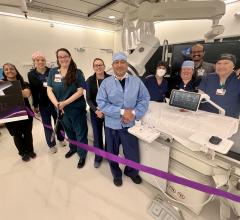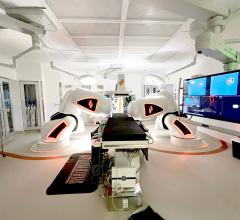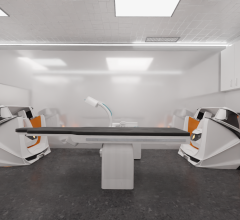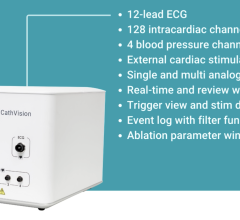
Photo by Airman 1st Class Aubree Owens, 30th Space Wing Public Affairs
April 19, 2021 — Former Vice President Mike Pence is recovering after having a pacemaker successfully implanted to improve a slow heart rate, according to statement from his office released to media outlets April 15. A full recovery is expected. The statement says Pence was diagnosed with asymptomatic left bundle branch block (LBBB).
Pence had the procedure done at Inova Fairfax Medical Campus in Falls Church, Virginia. Near where he lives in Virginia. Pence said previously he plans to move back to his home state of Indiana this summer.
Pence disclosed his medical history in 2016 when he was nominated vice president that he had been diagnosed with asymptomatic left bundle branch block. However, over the past two weeks, Pence experienced symptoms with a slow heart beat. After consulting with his doctors, he underwent the pacemaker implant.
"I am grateful for the swift professionalism and care of the outstanding doctors, nurses and staff at Inova Heart and vascular Institute, including Dr. Brett Atwater and Dr. Behnam Tehrani," Pence said in a statement following the procedure.
Pence said he appreciated his cardiologists at Inova consulted with his doctors back in Indiana, including pulmonologist Michael Busk, M.D., and cardiologist Charles Taliercio, M.D., at Ascension St. Vincent.
What is Left Bundle Branch Block
The American Heart Association (AHA) sent out a statement on the vice president and used it as an opportunity to educate the public on LBBB.
"Left bundle branch block indicates that that one of the electrical pathways regulating the normal rhythm of the heart is not functioning. Because the heart has another conduction pathway called the right bundle, patients with left bundle branch block are generally asymptomatic. They are monitored on a regular basis by their cardiologist. If patient with a left bundle branch block develops a slow heart rate and symptoms such as fatigue or lightheadedness, a pacemaker is sometimes needed," Mark A. Estes, M.D., FACC, FHRS, is an American Heart Association (AHA) volunteer medical expert and a professor of medicine in the University of Pittsburgh Medical Center (UPMC) cardiac electrophysiology program in Pittsburgh, Pa. "After pacemaker placement patients commonly are discharged from the hospital within 24 hours. They commonly recover sufficiently to return to work within a week."
A left bundle branch block (LBBB) is a common conduction disorder. Normally, electrical impulses travel down the right and left branches of the ventricles at the same speed. This allows both ventricles to contract simultaneously. But when there’s a “block” in one of the branches, electrical signals have to take a different path through the ventricle. This detour means that one ventricle contracts a fraction of a second slower than the other, causing an arrhythmia.
Symptoms and Diagnosis of LBBB
A person with bundle branch block may experience no symptoms, especially in the absence of any other problems. In such cases, bundle branch block is usually first identified by testing for some other reason, such as a routine physical. An electrocardiogram (ECG) reveals bundle branch block when it measures the heart’s electrical impulses.
Treatment for Bundle Branch Block
The AHA said often, no treatment is required for bundle branch block, but regular monitoring is recommended. If a pacemaker is needed to help the heart beat in a regular rhythm, the small battery-operated device may be implanted. This includes the generator, a small battery-powered unit that produces the electrical impulses that stimulate your heart to beat. The generator is implanted under the patient's skin through a small incision.
The generator is connected to the heart through tiny lead wires that are implanted at the same time in the veins leading to the heart. The impulses flow through these leads to the heart and are timed to flow at regular intervals just as impulses from the heart's natural pacemaker would. Some pacemakers are external and temporary, not surgically implanted.
How a Pacemaker Works
A pacemaker is an electrophysiology (EP) device that replaces the heart's defective natural pacemaker functions.
The sinoatrial (SA) node or sinus node is the heart's natural pacemaker. It is a small mass of specialized cells in the top of the right atrium (upper chamber of the heart). It produces the electrical impulses that cause your heart to beat.
A chamber of the heart contracts when an electrical impulse or signal moves across it. For the heart to beat properly, the signal must travel down a specific path to reach the ventricles (the heart's lower chambers).
When the heart's natural pacemaker is defective, the heartbeat may be too fast, too slow or irregular.
Rhythm problems also can occur because of a blockage of your heart's electrical pathways. The pacemaker's pulse generator sends electrical impulses to the heart to help it pump properly. An electrode is placed next to the heart wall and small electrical charges travel through the wire to the heart.
Most pacemakers have a sensing mode that inhibits the pacemaker from sending impulses when the heartbeat is above a certain level. It allows the pacemaker to fire when the heartbeat is too slow. These are called demand pacemakers.
Related Presidential Cardiology Content
Former President George W. Bush Gets Stent Following Coronary CT
President Clinton Receives Two Stents
Two Stents Implanted in Democratic Presidential Candidate Bernie Sanders

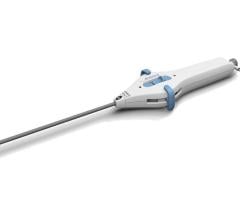
 July 31, 2024
July 31, 2024 
